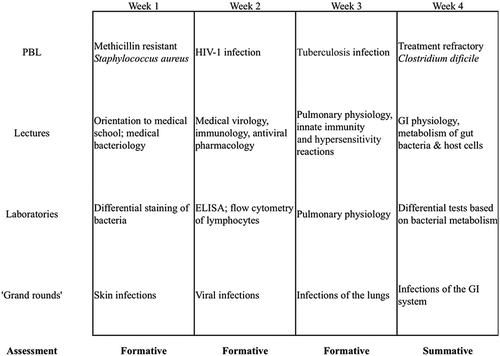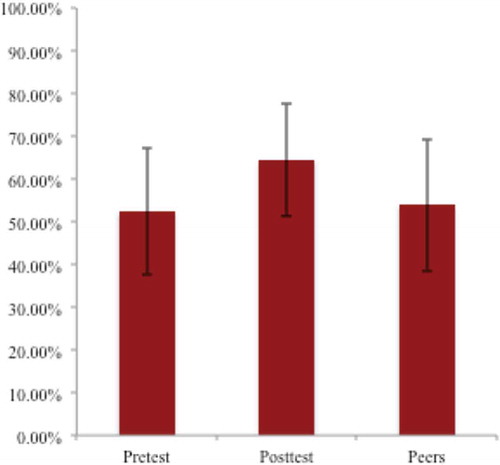Figures & data
Figure 1. Curricular elements of a four-week retention program for incoming medical students. Curricula was designed to combine active learning and more standard elements, and included weekly problem based learning (PBL) cases, didactic lectures, laboratories, and student presentations of a clinical infectious disease case (‘Grand rounds’), (ELISA, enzyme linked immunosorbant assay; GI, gastrointestinal; HIV-1, human immunodeficiency virus −1).

Table 1. Demographics of program participants.
Figure 2. Microbiology concept inventory. Students in the pre-matriculation program were administered the Host Pathogen Interactions concept inventory at the beginning of the program (Pretest). All medical students took the exam during orientation week, which was a week and half after the end of the program. The average scores and standard deviation were calculated for participants in the program (Posttest) and nonparticipants (Peers). The difference between the pretest and posttest was significantly different by a paired t-test (p = 0.0002, n = 22).

